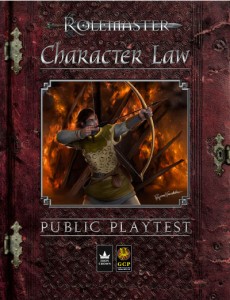
Death from natural weapons (such as a fist or an animal's teeth and claws) can happen but is very rare against armored combatants. However, the fact that one's opponents also fight using these same rules can make Rolemaster a very deadly game for both PCs and NPCs a lucky shot may let an inexperienced fighter slay a war-hardened veteran.įans of the system maintain that this adds a great deal of realism not present in many other fantasy games, and reflects the true deadliness of a well-placed strike from a weapon, even a small one such as a dagger. This means that a halfling does have a chance, albeit slight, to put down a troll with one well-placed (and lucky) dagger strike. In addition, specific injuries carry with them injury penalties, which inhibit further actions on the part of the wounded part, and loss of concussion hits (which represent overall health), can bring about similar penalties.Īlmost all die rolls in Rolemaster are 'open-ended', meaning that if a result is high enough (or low enough), you roll again and add (or subtract) the new roll to the original result - and this can happen multiple times, so in theory, there is no upper limit to how well (or poorly) one can roll. Death occurs, for both player characters and Gamemaster-controlled adversaries, primarily through this critical damage, and not through loss of hit points. Thus, unlike, for example, Dungeons and Dragons, Rolemaster describes wounds not only in the number of points of damage dealt (which are then subtracted from an abstract pool of 'Hit Points'), but with specific details of the injury inflicted. If a crit is inflicted, a second roll is made on the appropriate critical table. Critical Hits (or simply "crits"), can inflict additional concussion hits, bleeding (subtracted from concussion hits at the start of each new round), broken bones, loss of limbs or extremities, internal organ damage and outright death.

These are described by type (slash, crush, puncture, etc.) and by severity (generally A through E, with E being the most severe). In addition to concussion hits, however, a critical hit can be dealt by the result on the weapon table. If sufficient hits are dealt, the defender may go unconscious, but death seldom results purely from concussion hit damage. The attack total is cross-indexed with the type of armor (if any) worn by the defender and the result will be a number of concussion hits dealt, which are then subtracted from the defender's running total. The total is then applied to a table for the attacker's weapon. In addition various modifiers for position, wounds, and other factors are present.Īn attacking combatant rolls percentile dice, adds his or her OB to the total, adds modifiers, and subtracts the defender's DB. There are various charts to increase the realism of the results, but most of these are optional, and many rolls can be made on a relatively small number of tables.įor combat each character has an Offensive Bonus (OB), which takes into account one's natural physical adeptness, weapon skill, and other factors, and a Defensive Bonus (DB), which takes into account natural agility, the use of shields and "Adrenal Defense", the ability of martial artists to avoid blows seemingly without effort.


Task resolution is done by rolling percentile dice, applying relevant modifiers, and looking the result up on the appropriate chart to determine the result.

Rolemaster uses a percentile dice system and employs both classes (called "Professions" in Rolemaster) and levels to describe character capabilities and advancement.


 0 kommentar(er)
0 kommentar(er)
